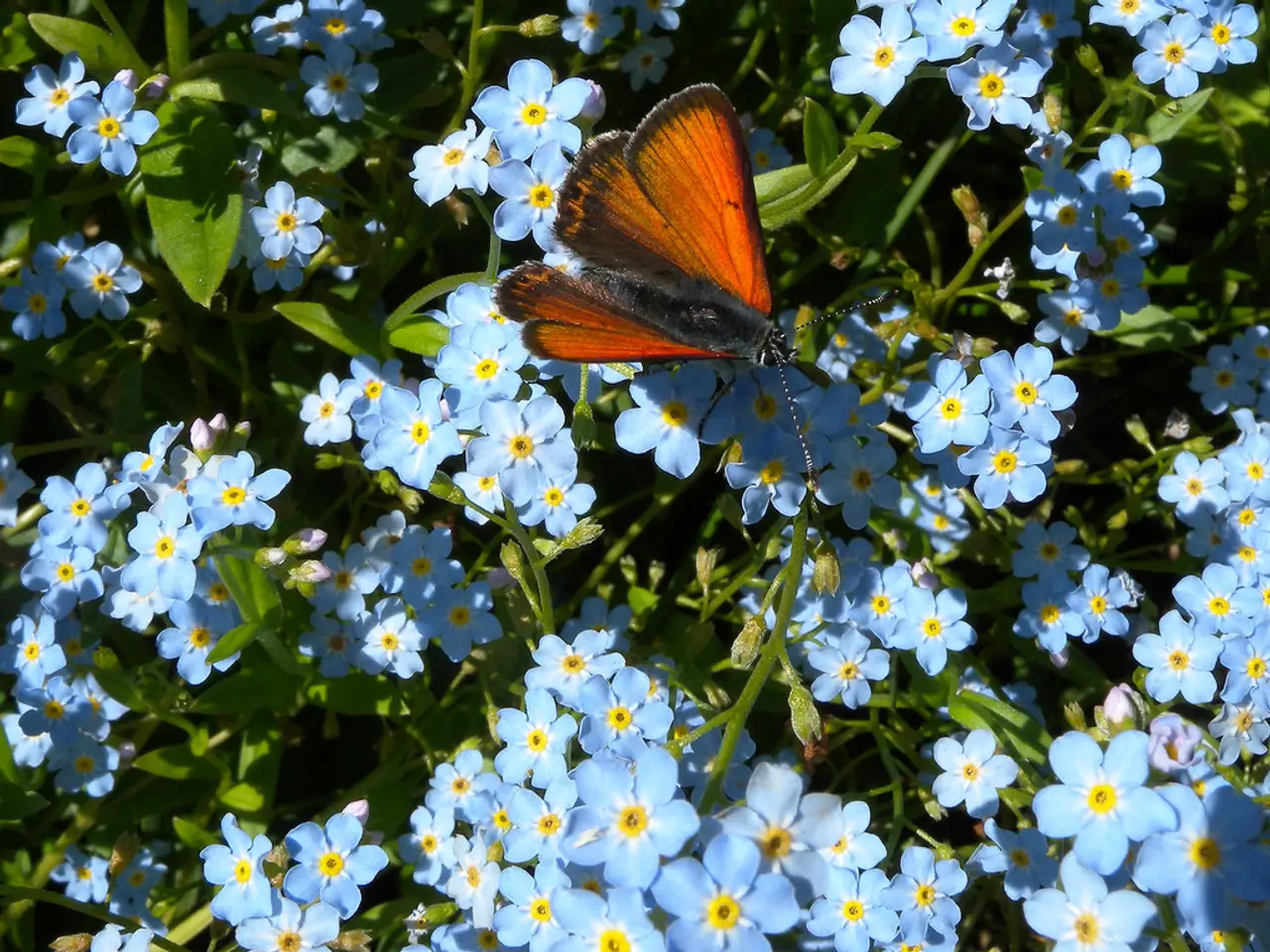Uncovering the Identity of Blue Vervain and Exploring Its Uses
Blue Vervain, scientifically known as Verbena hastata, is a perennial herbaceous plant native to North America. This versatile plant, known by common names such as American Vervain, Simpler's Joy, Enchanter's Plant, and Swamp Verbena, is relatively common across its native range, which includes the continental United States and parts of Canada.
Blue Vervain can be found in various wetland environments, such as river bottoms, streambanks, slough peripheries, wet fields, meadows, and waste areas. It thrives in moist prairies and along lakeshores and streambanks, often reaching heights of up to 6 feet.
Each Blue Vervain flower is replaced with four reddish-brown nutlets about 2mm long and oblongoid in shape. The stems are red or green, square, and covered in fine white hairs. The leaves are green, oppositely arranged, spear-shaped, toothed, and petioled, typically measuring about 6 inches long and 1 inch wide.
Blue Vervain flowers form on pencil-shaped spikes that protrude from the stems, tightly packed with small, five-lobed, tubular, bluish-purple flowers. This plant blooms between June and September, making it an important pollinator plant.
Blue Vervain has a fibrous, rhizomatous root system. It is edible and can be harvested and eaten in various forms, including roots, leaves, and seeds. However, it's important to note that Blue Vervain may interfere with blood pressure medication and hormone therapy, and it may stimulate the uterus, making it unsafe during pregnancy. In extremely large quantities, Blue Vervain may cause vomiting and diarrhea due to its bitter taste, primarily used for medicinal purposes, either externally or as a tea.
Blue Vervain is not to be confused with Purple Loosestrife, a non-native invasive species with reddish-purple flowers and smooth-edged, sessile leaves. Purple Loosestrife leaves are broader, generally oval to egg-shaped, and only 2 to 3 inches long.
Blue Vervain is a valuable addition to the North American flora, not only for its beauty but also for its role as a pollinator plant and potential medicinal properties. As with any plant, it's essential to use it responsibly and consult with a healthcare professional before consuming it for medicinal purposes.
Read also:
- Exploring the Psychological Impacts of Plant Therapy and Enhancing Mental Health through Floral Interactions
- EU Faces Demand from Protesters to Halts Incineration of American-Owned Birth Control Products
- MERS (Middle East Respiratory Syndrome): A Comprehensive Overview and Treatment Guide
- Strategies to Maintain Optimal Eye Health Throughout Aging Process





